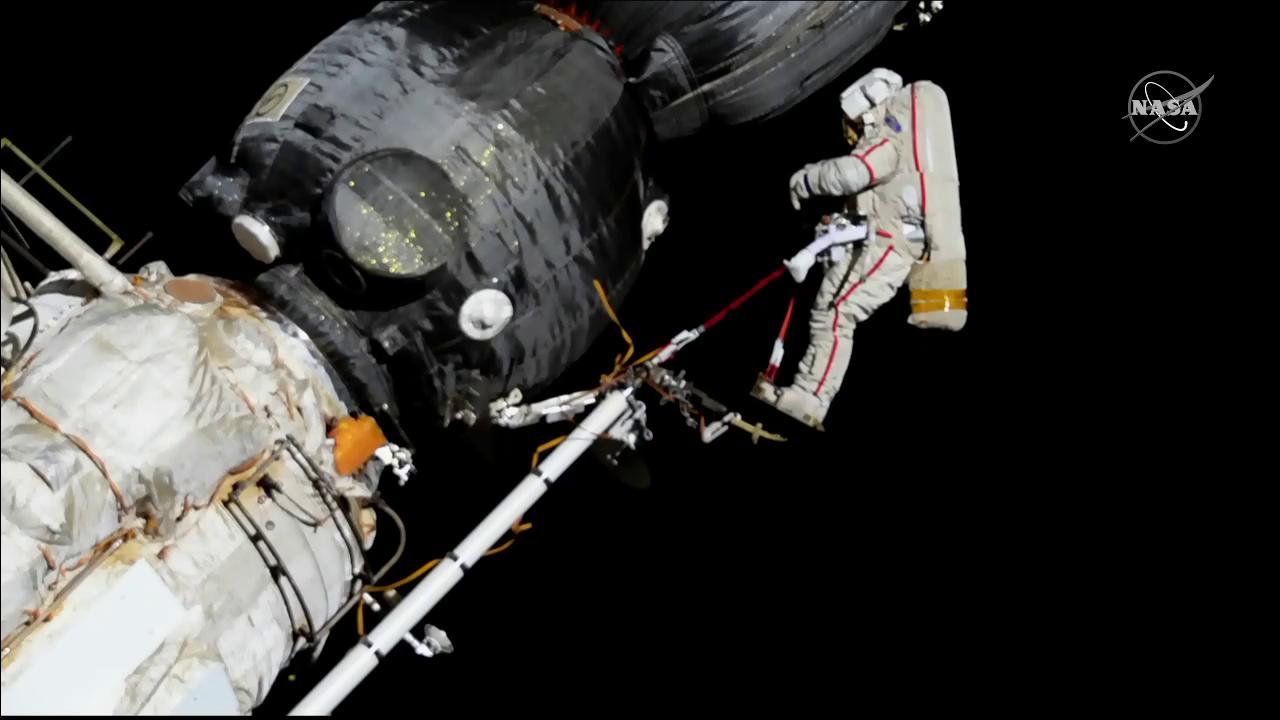
The Expedition 71 crew had its hands full on Thursday with a multitude of research activities filling the schedule. The orbital septet also continued gearing up for next week’s spacewalk amidst ongoing cargo operations aboard the International Space Station.
Advanced space science is continually taking place aboard the orbital outpost with the experiments being run by astronauts, remotely controlled by researchers on the ground, or autonomously operated. The equipment housing and powering the research also requires constant monitoring and maintenance ensuring high quality results that provide valuable insights into microgravity phenomena.
NASA astronauts Jeanette Epps and Tracy C. Dyson split their schedule on Thursday servicing hardware supporting a pair of different investigations. Epps began her day in the Kibo laboratory module cleaning components and swapping samples inside the Electrostatic Levitation Furnace. The high temperature research device explores the thermophysical properties of materials difficult to observe in Earth’s gravity environment. Next, Dyson set up biomedical hardware she will use on Friday to measure how the brain regulates blood flow in the absence of gravity. Results may lead to new therapies and countermeasures for spaceflight-induced and Earthbound blood pressure conditions.
NASA Flight Engineers Mike Barratt and Matthew Dominick spent their morning supporting two space biology investigations looking at separate but critical phenomena. Barratt attached electrodes to his chest and used an ultrasound device to scan his vascular system with remote guidance from doctors on Earth. The medical data is being used to assess the cardiovascular risk of living in space and is one part of the CIPHER human research study. Dominick swabbed surfaces throughout the station’s U.S. segment collecting microbe samples for analysis. The specimens will be treated on the orbital lab and examined on Earth to determine microbial resistance to antibiotics and the risk to crew health.
Dominick then partnered up with Barratt mid-afternoon testing portable breathing gear. At the end of the day, Dominick joined Dyson and swapped cargo in and out of the SpaceX Dragon spacecraft. Dragon is due to complete its cargo mission and depart the station on April 26. Dyson earlier collected microbe samples for incubation and analysis. Epps wrapped up her shift installing a computer with a camera pointed out a window in the Destiny laboratory module for Earth observations.
Spacewalk preparations have been well underway this week as cosmonauts Oleg Kononenko and Nikolai Chub get ready for a seven-hour excursion to swap hardware outside the space station on April 25. The Roscosmos duo began the day pedaling on an exercise cycle for a pre-spacewalk fitness evaluation. Afterward, the crewmates checked their Orlan spacesuit systems and components inside the Poisk airlock.
Roscosmos Flight Engineer Alexander Grebenkin remained focused on life support maintenance and orbital plumbing tasks in the cosmonaut’s portion of orbital outpost. Later in the afternoon, he participated in the spacewalk preparations staging standard medical equipment and tools in Poisk.
Learn more about station activities by following the space station blog, @space_station and @ISS_Research on X, as well as the ISS Facebook and ISS Instagram accounts.
Get weekly video highlights at: https://roundupreads.jsc.nasa.gov/videoupdate/
Get the latest from NASA delivered every week. Subscribe here: www.nasa.gov/subscribe









